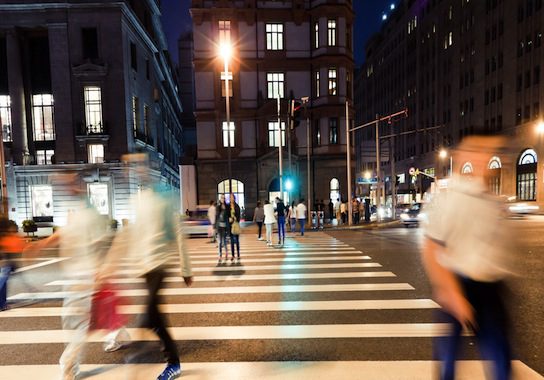Finding a Commons in the Polarized Polis

Recent studies have shown that an increasing amount of Americans live alone: the number has more than tripled since 1970 to 33.2 million. Many younger adults leave home for college and never return: a 2008 Pew poll showed that college graduates are far less likely to live in their birth state, and most young people still living in their hometown want to move in the next five years. Many are moving to America’s urban centers—but this city life tends to encourage a lonelier, more isolated existence.
It is true that not everyone wants to live in the city. In a Mere Orthodoxy article, Jake Meador pointed to a net increase in farms that—though small—could herald a return to more landed, agricultural communities. Meador’s story suggests some in the younger generation view this rural lifestyle as both economically and socially gratifying. Perhaps these moves signal a discontent with the polarizing atmosphere of cities. The difficulty of getting “plugged in” becomes apparent when considering these common facets of city life:
First, the urban center’s “commons” is often too crowded and busy to foster public discourse. In small towns, even a grocery store becomes a meeting place for locals. But in the modern city, stores are usually crowded with busy customers. The city’s very magnitude creates time and spatial inconveniences, making it unlikely for acquaintances to meet in passing. The closest urban equivalent to a “commons,” it seems, might be the modern bar or coffee shop. Take the TV show “How I Met Your Mother”: the show’s starring foursome always congregate at their favorite New York City bar. The modern Starbucks may serve a similar function: a recent Boston study revealed that local Starbucks fostered sociability and friendliness amongst its customers. Customers were encouraged to loiter, sit, and talk. Sadly, Boston’s local indie coffee shops were described as less open and welcoming. While they still had the best “atmosphere,” the baristas and even customers were described as “aloof”. Such places offer a niche for coffee connoisseurs, but they create less of a commons than a club.
Another roadblock to fostering community connectedness is the city’s prevalent focus on international and national news. Perhaps this arises from urban diversity: a city with panoramic demographics reflects global tastes and interests. However, it is difficult when reading the front page of city newspapers to find out what is going on locally. Most city media fixates on the national arena—especially if one lives in the D.C. metro. Without knowledge of local goings-on or concerns, the community becomes disoriented. Its inhabitants focus on other places and other people.
Private institutions can help lend a sense of context and community to the city. Those who attend church or some other community organization on a weekly basis should be able to build local acquaintances. But it is also true that the size of city churches does not always lend itself to such mingling. Metro churches often have huge congregations. It is difficult to establish true friendships in such crowds.
After considering these difficulties, it makes sense that urban dwellers often live alone. Battling polarization is a difficult feat. One must find loopholes in at least some of the above difficulties in order to begin establishing urban community. Perhaps the growth of such local endeavors as the farmer’s market and (hopefully friendly) local stores will foster a more open, active commons. Promulgation of the “slow food movement” could encourage a more relaxed and community-centric style of gathering. Personally, finding a commons in my community has been difficult. When walking into a local coffee shop, one isn’t likely to see a familiar (or even a particularly friendly) face. But there is a wonderful local farmer’s market, and it’s probably the closest I’ve gotten to actual dialogue with other locals. True, my last attempt didn’t last much longer than “Hello, how are you?” “Fine, thank you.” But there’s always next Saturday.
Comments